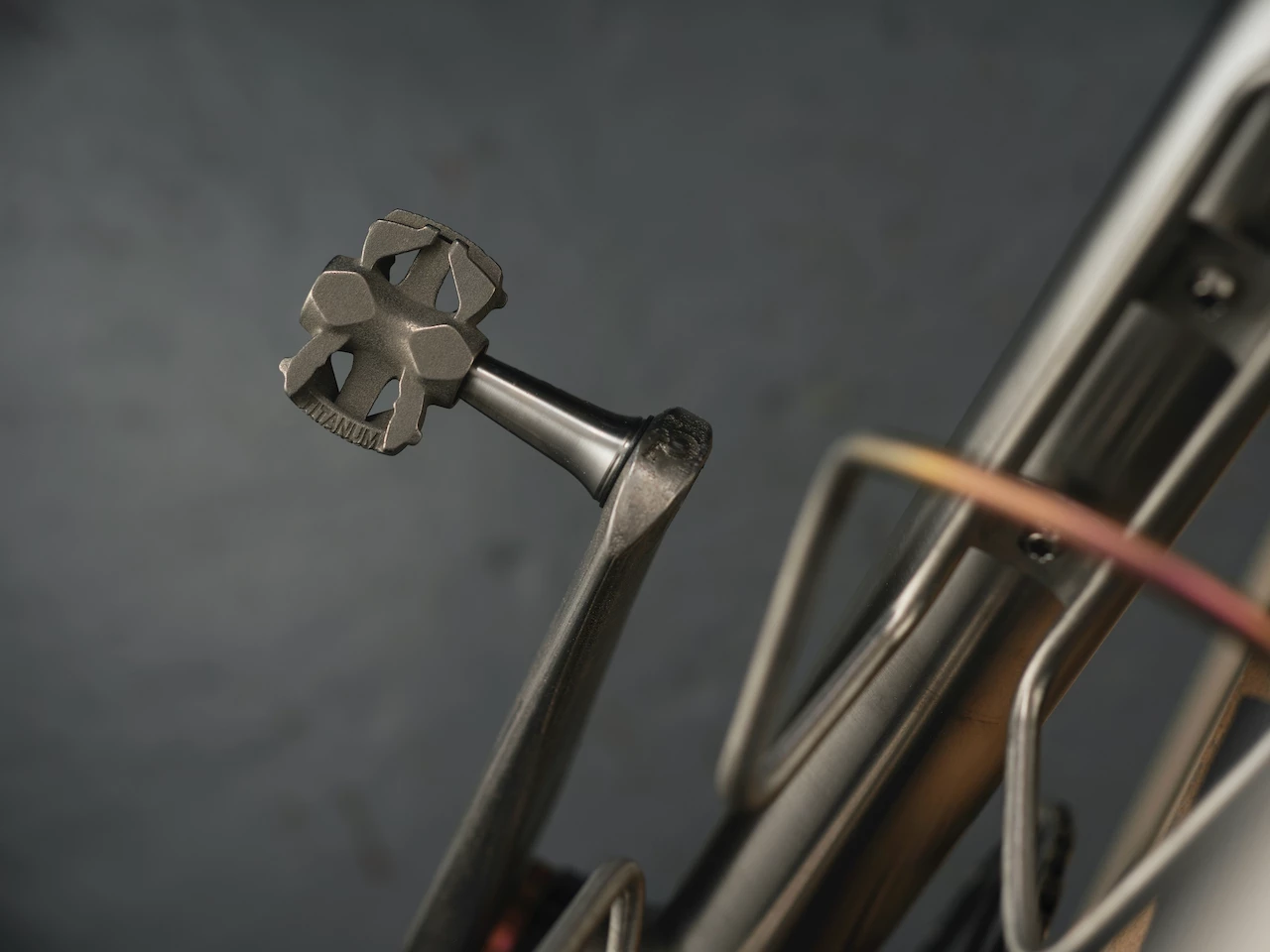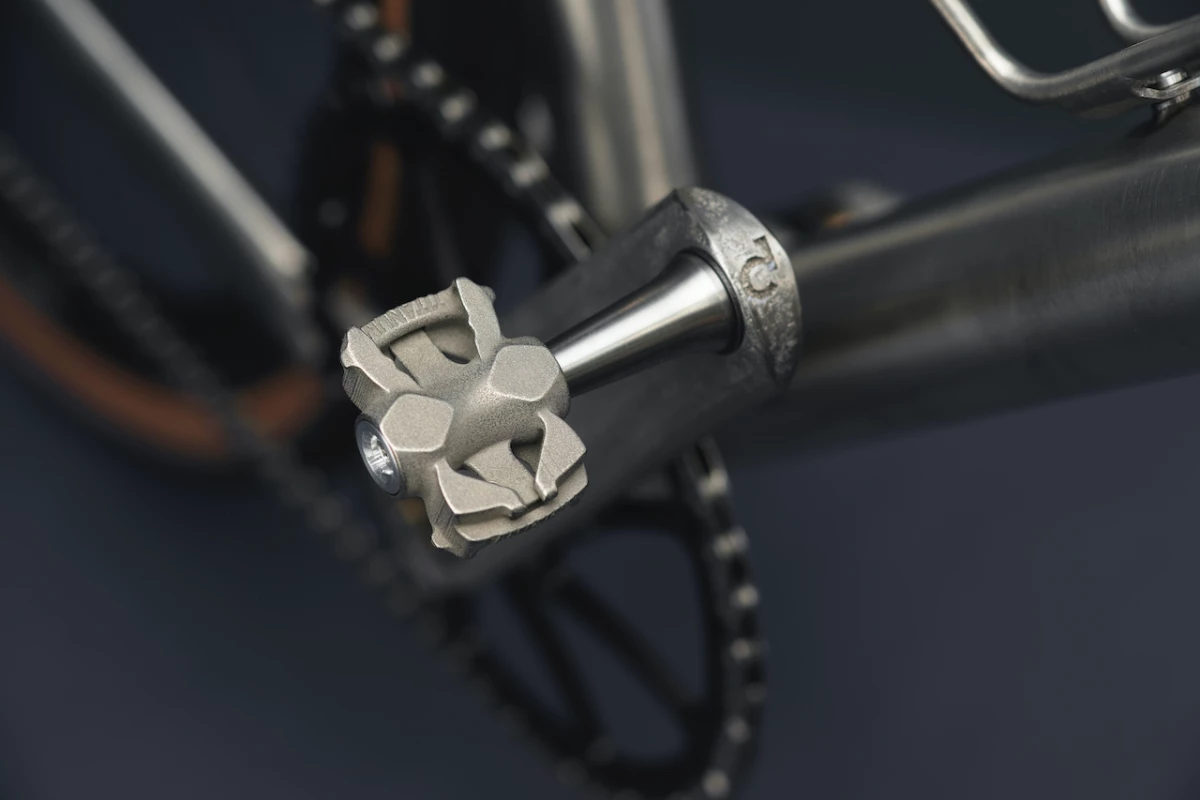Although there are now bikes with 3D-printed titanium frames, the things are out of most cyclists' price range. That said, if a current Kickstarter campaign is successful, you may soon be able to buy yourself a set of thin, lightweight pedals made in the same fashion.
Manufactured by German startup Titanum – and invented by cyclist/engineer Rico de Wert – each MyTi pedal features a Ti6Al4V titanium body that's 3D printed in one solid piece. A sintering process is used, in a which a laser selectively melts titanium powder, building objects up from the bottom one layer at a time.
The MyTi pedals are clipless, meaning that they retain the rider's foot via a titanium cleat mounted on the bottom of that person's shoe. That cleat is engaged in the pedal's retention mechanism simply by pushing the foot down and forward on either side of the pedal – rotating the heel outwards releases it.

Unlike most clipless pedals, which incorporate a coil spring in their mechanism, the MyTi's go with a leaf spring that's printed right into them. According to Titanum, this makes for fewer potential points of failure, more strength, a thinner design (each pedal is 7.8 mm thick), and less weight – the two different models reportedly tip the scales at 100 and 140 grams per pair.
Additionally, the company claims that when the rider is pulling straight up on the pedals, their shoes will remain engaged much more securely than is the case with other clipless models – in fact, the MyTi's are said to be able to withstand up to 300 kg (661 lb) of vertical pulling force without releasing.
Nonetheless, they also offer 6 degrees of float. This means that even when engaged, the rider's shoe can still pivot somewhat relative to the pedal, so their foot isn't locked in one unyielding angle.

The MyTi's are intended for use on both road and mountain bikes, and as mentioned, are being offered in two versions. One, the MyTi Ultra, features titanium axles with sealed needle roller bearings that can withstand over 550 kg (1,213 lb) of pedal force. The other, the MiTy R, goes with less pricey – but slightly heavier – stainless steel axles.
Assuming they reach production, a pledge of €247 (about US$295) will get you a set of the MyTi R's, with €277 ($330) required for the MyTi Ultras – their planned retail prices are €329 and €369 ($393 and $440), respectively.
There's more information in the following video.
Sources: Kickstarter, Titanum




